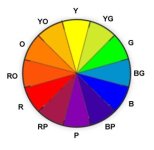yogiman
The Queen scale makes perfectly sense to me. The supernal triangle consists of the noncolours white and black, and their mixture is assigned to Chokmah. The ethical triangle consists of the primary colours: blue for the father of the heaven, and red and gold for how mars and the sun are actually perceived. Netzach is blue+yellow=green, the colour belonging to the vegetable kingdom, Hod is red+yellow=orange. The moon is indigo or purple, the colour of the night sky. The result is that all opposite sephirah have also opposite colours, called flashing colours.
I suppose the same recipe is applicable to the other scales. Is this true?
I suppose the same recipe is applicable to the other scales. Is this true?


